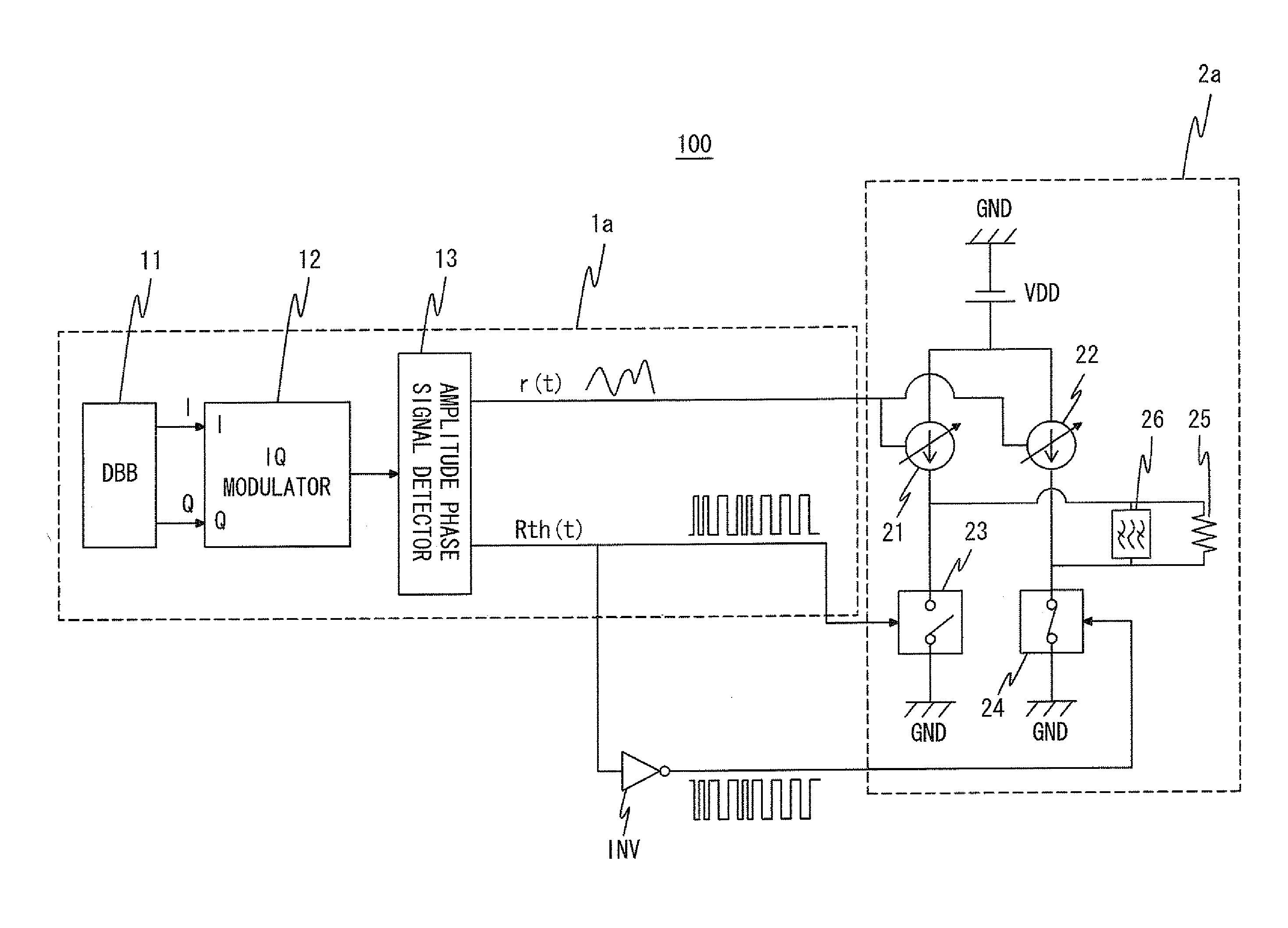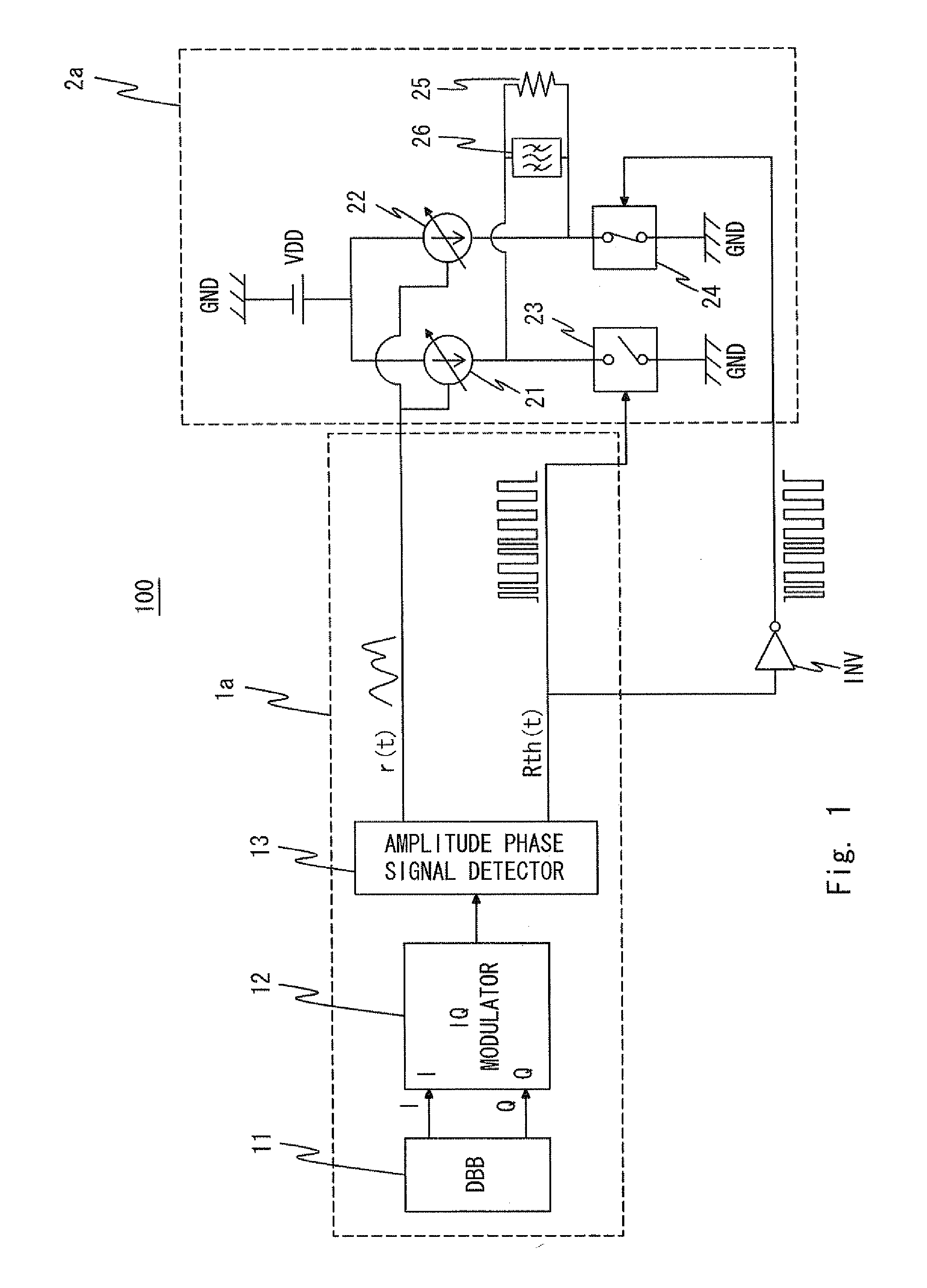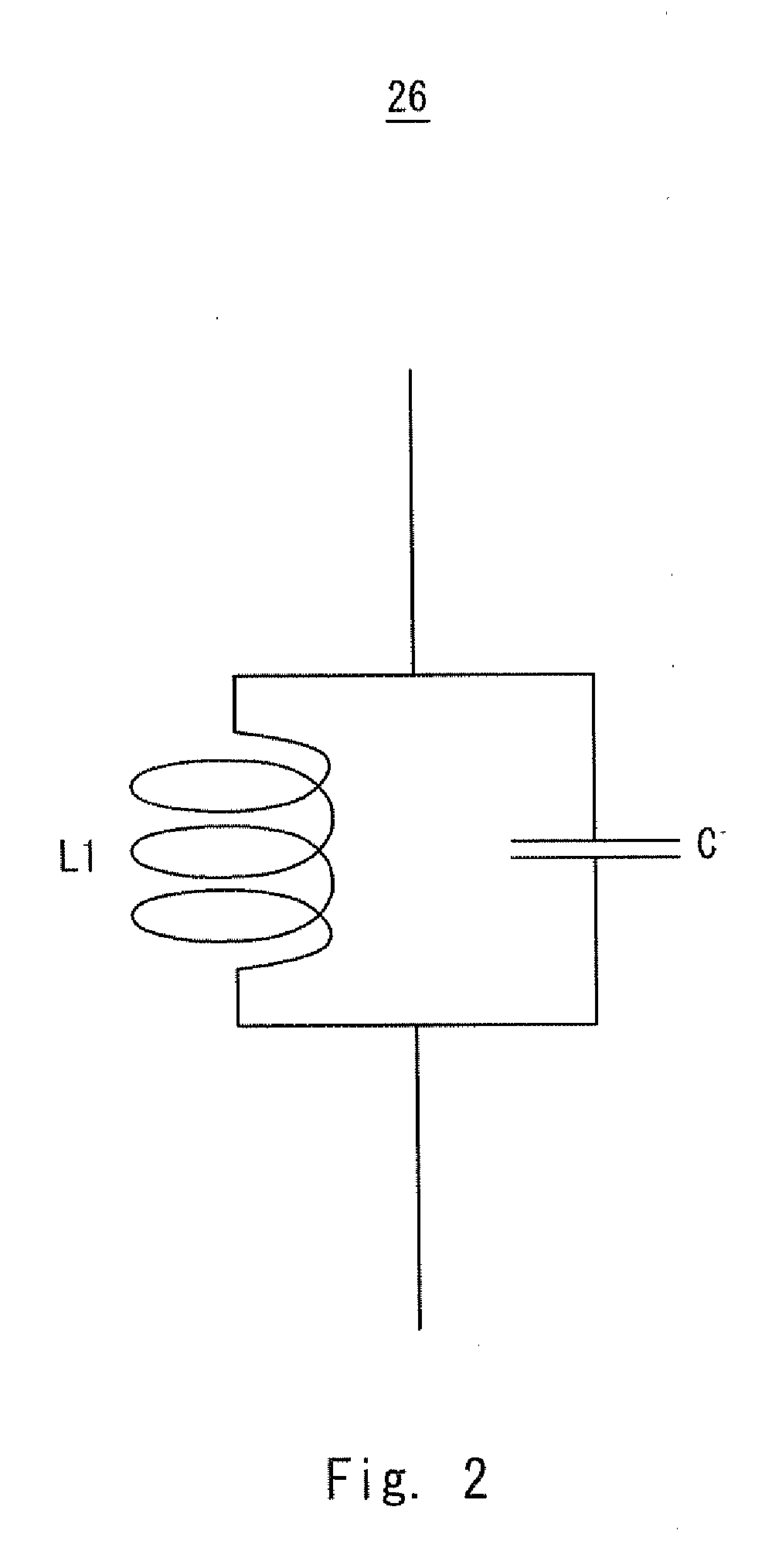Transmitter and method for controlling same
a technology for transmitting devices and transmitters, applied in the field of transmitters, can solve the problems that the power amplifier disposed at the final stage of the transmission unit of the communication device occupies 50% or more of the power consumption of the entire transmitter, and achieves excellent power efficiency and favorable noise characteristics
- Summary
- Abstract
- Description
- Claims
- Application Information
AI Technical Summary
Benefits of technology
Problems solved by technology
Method used
Image
Examples
first exemplary embodiment
[0044]First, a transmitter according to a first exemplary embodiment of the present invention will be described. FIG. 1 is a block diagram showing a configuration of a transmitter 100 according to the first exemplary embodiment. The transmitter 100 includes an RF signal generator 1a and a current mode class-D amplifier 2a.
[0045]The RF signal generator 1a includes a digital baseband (hereinafter referred to as “DBB”) 11, an IQ modulator 12, and an amplitude phase signal detector 13. The DBB 11 generates IQ signals.
[0046]The IQ modulator 12 converts the IQ signals into an RF signal RF(t) by IQ modulation. Here, “t” is a variable representing time. The RF signal RF(t) is generally expressed by the following expression (2) using an amplitude signal r(t) and a phase signal th(t).
RF(t)=r(t)·th(t) (2)
[0047]The phase signal th(t) is expressed by the following expression (3).
th(t)=cos(ωc·t+theta(t)) (3)
where ωc is an angular velocity obtained by multiplying a carrier frequency by 2π, and ...
second exemplary embodiment
[0084]Next, a transmitter according to a second exemplary embodiment of the present invention will be described. FIG. 15 is a block diagram showing a configuration of a transmitter 200 according to the second exemplary embodiment. The transmitter 200 has a configuration in which the RF signal generator 1a of the transmitter 100 is replaced with an RF signal generator 1b. The other components of the transmitter 200 are similar to those of the transmitter 100, so the description thereof is omitted.
[0085]The RF signal generator 1b has a configuration in which a divider 14 is added to the RF signal generator 1a of the transmitter 100 and the amplitude detector 131 is replaced with an amplitude detector 133. In the transmitter 200, the DBB 11 outputs IQ signals to each of the divider 14 and the amplitude detector 133.
[0086]The divider 14 outputs signals obtained by dividing the IQ signals by the amplitude signal output from the amplitude detector 133. Radio signals Ib(t) and Qb(t) which ...
PUM
 Login to View More
Login to View More Abstract
Description
Claims
Application Information
 Login to View More
Login to View More - R&D
- Intellectual Property
- Life Sciences
- Materials
- Tech Scout
- Unparalleled Data Quality
- Higher Quality Content
- 60% Fewer Hallucinations
Browse by: Latest US Patents, China's latest patents, Technical Efficacy Thesaurus, Application Domain, Technology Topic, Popular Technical Reports.
© 2025 PatSnap. All rights reserved.Legal|Privacy policy|Modern Slavery Act Transparency Statement|Sitemap|About US| Contact US: help@patsnap.com



